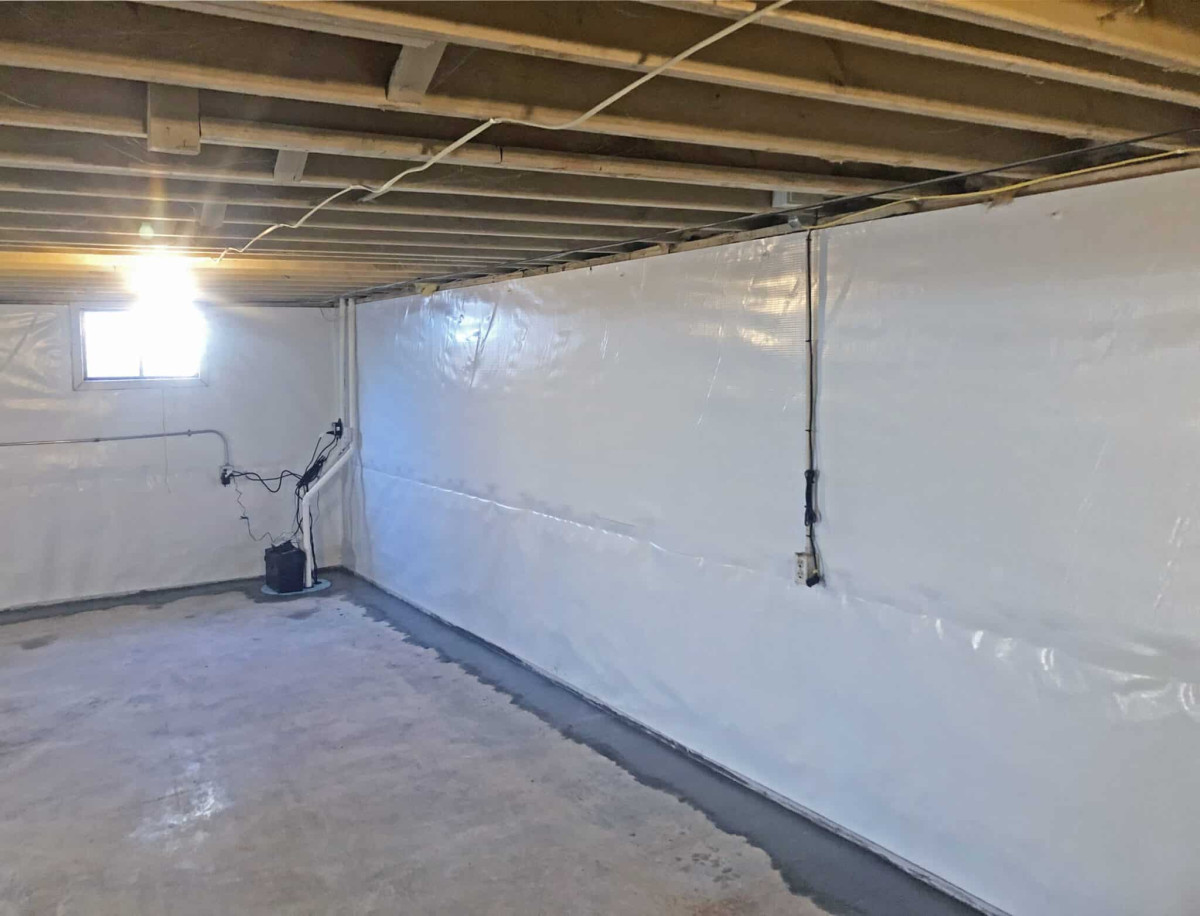Top Tips to Keep Your Basement Dry Year-Round: Waterproofing, Ventilation & Smart Maintenance
Wyoming, United States - May 26, 2025 / Everdry Waterproofing of Greater Grand Rapids /
Ever find yourself battling with a damp basement year-round? You’re not alone. A dry basement isn’t just about comfort; it’s crucial for maintaining the structural integrity of your home and preventing mold growth. From regular inspections for cracks to effective waterproofing, right down to the use of dehumidifiers, there’s a plethora of strategies you can employ. But where do you start? Well, the answer may be simpler than you think. Let’s explore this further.
Understanding Basement Moisture Problems
If you’ve ever dealt with a damp or flooded basement, you know how frustrating it can be. But understanding the root cause of basement moisture can arm you with the knowledge to prevent future issues.
Moisture in basements typically arises from two sources: indoor humidity and outside water. The first can be caused by everyday activities like showering, cooking, or even just breathing. These activities release water vapor that can seep into your basement and cause dampness if not properly ventilated.
On the other hand, outside water can enter your basement through cracks in the foundation, walls, or floor. This is often a result of poor drainage systems, inadequate waterproofing, or heavy rainfall.
It’s also essential to know that basements are prone to condensation due to temperature differences between the air inside and the cooler basement walls and floor. This can lead to moisture problems, particularly in basements without proper insulation.
Regular Basement Inspections
To guarantee your basement stays dry, it’s essential you conduct regular inspections for potential leak sources.
Routine checks not only help pinpoint areas prone to moisture buildup but also allow you to address minor issues before they escalate into costly repairs.
Identifying Potential Leak Sources
Begin your regular basement inspections by searching for potential leak sources. This proactive step can save you a lot of trouble down the line.
Focus initially on the walls and floor, as they’re the most likely areas for leaks to occur. Pay special attention to cracks or holes, no matter how small. Water has a sneaky way of finding its way through the tiniest of openings, and what seems insignificant can turn into a significant problem.
Remember to inspect your window wells. Poorly sealed windows can allow water to seep in, especially during heavy rains. Likewise, check any areas where pipes or wires enter the basement. Even the smallest gap around these can provide an entry point for water.
Next, examine your basement’s exterior. Look for areas where the ground slopes towards your home, which can lead to water pooling against your foundation and eventually finding its way inside.
Lastly, check your gutters and downspouts. If they’re not working properly, they could be directing water towards your basement instead of away from it.
Importance of Routine Checks
Regular basement inspections are a cornerstone of maintaining a dry, damage-free basement. This routine practice isn’t just about identifying issues, it’s about preventing them. By keeping a close eye on your basement’s condition, you’re staying a step ahead of potential problems that could lead to moisture buildup or damage.
You might be thinking, “Why should I bother with regular checks?” Well, consider this: your basement is often the foundation of your home. If it’s compromised, it could affect the whole structure.
Plus, a dry basement creates a safer, healthier living environment, free from harmful molds and mildew. It also protects your belongings stored there from water damage.
Now, “How often should I inspect my basement?” you might ask. There isn’t a one-size-fits-all answer. It depends on your home’s age, location, and construction.
However, at a minimum, consider a thorough inspection every season change. That’s when weather shifts can create new issues or exacerbate existing ones.
Addressing Minor Issues Early
Unattended drips, cracks, and damp spots in your basement may seem minor but, if ignored, they could escalate into significant issues. It’s essential that you address these problems as soon as you spot them. Regular inspections can help you identify and rectify these minor issues before they turn into major, costly repairs.
Each season brings its own set of challenges to your basement. In winter, freezing temperatures can cause pipes to burst, while spring’s thaw can lead to water seeping through your foundation.
Summer’s humidity can prompt mold growth, and autumn leaves can clog your gutters, leading to overflow and leakage into your basement.
So, how can you keep on top of these potential problems? Devise a monthly checklist. Look for visible signs of water damage like discolored walls or a musty smell.
Check your sump pump, if you have one, to guarantee it’s in working order. Clean your gutters regularly to prevent blockages. Make sure your landscape slopes away from your home to prevent water from pooling around your foundation.
Effective Waterproofing Techniques
While many homeowners worry about water damage, there are effective waterproofing techniques to guarantee your basement remains dry. One method is applying a waterproofing sealant to the interior walls and floors. This prevents moisture from seeping in, offering a solid defense against potential water damage.
You can also consider exterior waterproofing, although it’s more labor-intensive and costly. It involves excavating around your home’s foundation to install a waterproof barrier, but it’s often more durable and effective.
Another technique is installing a sump pump. If water does manage to get into your basement, the sump pump automatically pulls it out and redirects it away from your home. It’s an excellent backup plan to have, especially in areas prone to heavy rainfall.
You might also consider a French drain system. This carries water away from the house, reducing the pressure on your basement walls.
Lastly, don’t underestimate the importance of proper gutter maintenance. If your gutters can’t effectively redirect water away from your home, it could pool around your foundation and potentially seep into your basement.
Importance of Proper Ventilation
Guaranteeing adequate ventilation in your basement is an important but often overlooked aspect of keeping it dry. A well-ventilated basement can prevent the build-up of moisture, reducing the risk of mold, mildew, and dampness.
Proper ventilation allows fresh air to circulate, replacing stale and moist air that can cause damage. It helps keep temperatures stable, preventing condensation from forming on cooler basement surfaces.
It’s not just about opening a window or two; ideally, you should implement a system that promotes airflow consistently throughout the entire basement area.
Moreover, good ventilation improves the air quality in your basement, making it a safer and healthier space for storage or other uses. Poor air quality can lead to health issues such as allergies and respiratory problems.
Remember, it’s vital to regularly check and maintain your ventilation system. Over time, vents can become blocked with dust and debris, compromising their effectiveness.
Regular cleaning and, when necessary, professional servicing can guarantee your system continues to function efficiently.
Utilizing Dehumidifiers and Fans
You might be surprised to learn just how effective dehumidifiers and fans can be in maintaining a dry basement. Dehumidifiers are essential as they extract excess moisture from the air, reducing humidity levels. This process deters the growth of mold and mildew, common problems in damp basements.
Some dehumidifiers even include a hygrometer, a tool that measures the amount of moisture in the air. This helps you monitor and adjust the humidity levels accurately.
Fans, on the other hand, improve air circulation, inhibiting the accumulation of damp, stagnant air. Position them strategically to encourage airflow throughout the entire basement. Box fans and window fans are particularly effective, directly drawing in fresh air and expelling moist air outdoors.
When selecting a dehumidifier, consider the size of your basement. Larger areas may require a higher-capacity unit.
On the flip side, if you’re using fans, look for those with higher CFM (cubic feet per minute) ratings. They’ll circulate more air, enhancing their drying effect.
Sump Pump: Your Basement’s Savior
Your basement’s unsung hero could very well be the sump pump. This little powerhouse works quietly in the background, tirelessly keeping your basement dry and free from the costly and stressful issues water damage can cause.
Sump pumps are typically installed in the lowest part of your basement or crawlspace. Their job is to collect water that enters your home before it causes any problems, and then pump it back outside, away from your foundation. They’re especially useful in areas prone to heavy rainfall or flooding.
You’ve got two types to choose from: pedestal and submersible. Pedestal pumps have their motor out of the water, which can make them easier to maintain and less prone to electrical issues. Submersible pumps, on the other hand, are completely sealed and submerged in the sump pit. They’re quieter and can handle larger volumes of water, but may be more difficult to service.
Keeping your basement dry isn’t just about comfort, it’s about preventing long-term damage and maintaining the value of your home. A reliable sump pump is an essential part of that equation.
Keeping your basement dry is like running a marathon – it requires preparation, dedication, and consistent effort. Don’t overlook regular inspections, effective waterproofing, and proper ventilation. Harness the power of dehumidifiers, fans, and sump pumps to combat dampness. With these measures, your basement will be as dry as a bone, safeguarding your home’s integrity and your indoor air quality. So, lace up those metaphorical running shoes and let’s keep that basement dry!

Contact Information:
Everdry Waterproofing of Greater Grand Rapids
5273 Division Ave S
Wyoming, MI 49548
United States
Rob VanSuilichem
(616) 406-0808
https://www.everdrygrandrapids.com


